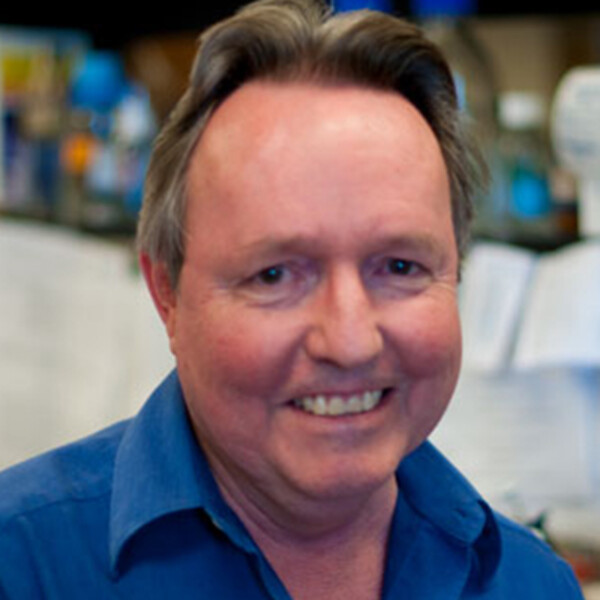Main Second Level Navigation
Douglas Templeton
BSc, PhD, MD

Prof. Templeton received his BSc (Biochemistry, 1976) and PhD (Chemistry, 1979) from Carleton University and his MD (1983) from the University of Western Ontario.
Following additional training at the Hospital for Sick Children, he joined the Faculty in Clinical Biochemistry at the University of Toronto in 1985 and became Full Professor in Laboratory Medicine and Pathobiology in 1996.
Prof. Templeton has published 200 papers and 7 books in the fields of trace metal cell biology, bioinorganic chemistry, and analytical and metal toxicology.
He has worked with the International Union of Pure and Applied Chemistry for many years, both as President of the Division of Chemistry and Human Health (where he is a lifetime Emeritus Fellow) and as Chair of the IUPAC Project Committee, and was given an IUPAC award in 2019 for Outstanding Service to the Advancement of Chemistry Worldwide.
Roles in education
Dr. Templeton co-founded the Undergraduate Specialist Program in Pathobiology in 1999, and served as Undergraduate Coordinator until 2019.
He is presently Coordinator for Professional Graduate programs in LMP. In this role, he acts as liaison with the School of Graduate Studies in matters of program governance and student progress in the MHSc in Laboratory Medicine (Clinical Embryology, Pathologists' Assistant fields), the Translational Research Program, and the joint Artificial Intelligence in Healthcare: Master of Science in Applied Computing (MScAC).
Research Synopsis
The major focus of our research is trace element biology and toxicology, and current projects address cadmium and iron.
Cadmium is an environmentally important toxic metal that adversely affects a number of cellular processes influencing both cell death and proliferation.
We are using cadmium as a tool to study linkages between signaling, cytoskeletal assembly, oxidative stress, oncogene expression, and apoptosis in renal mesangial cells.
Dependent on conditions of exposure, cadmium may enhance cell survival (potentially contributing to its carcinogenicity) or promote cell death by competing pathways of apoptotic and apoptosis-like cell death, autophagy, and necrosis.
Multiple signaling pathways are involved in these events, and a particular interest in our lab is the involvement of the calcium/calmodulin-dependent protein kinase, CaMK-II. Cadmium also initiates disassembly of the filamentous actin cytoskeleton in mesangial cells, and the underlying mechanisms, which involve CaMK-II along with fragmentation and translocation of gelsolin, are being elucidated.
This system is proving useful for studying the links between cell signaling, cytoskeletal dynamics, and cell death.
Another metal of interest is iron. Iron overload occurs in patients with transfusion-dependent anemias, such as thalassemia major. By studying mechanisms of iron transport and storage, we hope to learn more about the toxic effects of iron in the context of cardiac and hepatic fibrosis.
A current interest is in the ATP-hydrolyzing activity that we have found to be associated with iron regulatory protein 1 (IRP-1), and the consequent links to cellular energy metabolism.
IRP-1 switches between an RNA binding state, where it regulate translation of a number of transcripts involved in iron metabolism and cellular energy management, and an enzymatic state in which it displays cytosolic aconitase activity.
In its aconitase form, IRP-1 is potentially an important regulator of cytosolic citrate levels, which tend to be high in cancer cells. IRP-1’s role in diverting citrate to fatty acid synthesis for new membranes on the one hand, and glutamate production on the other hand, is currently under investigation.
Selected Publications
Popovic, Z. & Templeton, D.M., Cell density-dependent shift in activity of iron regulatory protein 1 (IRP-1)/cytosolic (c-)aconitase, Metallomics 4, 693-699 (2012).
Liu, Y. & Templeton, D.M., Involvement of CaMK-IId and gelsolin in Cd2+-dependent cytoskeletal effects in mesangial cells, J. Cell. Physiol. 228, 78-86 (2013).
Templeton, D.M. & Liu, Y., Effects of cadmium on the actin cytoskeleton in renal mesangial cells, Can. J. Physiol. Pharmacol. 91, 1-7 (2013).
Choong, G., Liu, Y. & Templeton, D.M., Cadmium affects focal adhesion kinase (FAK) in mesangial cells: Involvement of CaMK-II and the actin cytoskeleton, J. Cell. Biochem. 114, 1832-1842 (2013).
Choong, G., Liu, Y. & Templeton, D.M., Cadmium-induced glutathionylation of actin occurs through a ROS-independent mechanism: Implications for cytoskeletal integrity, Toxicol. Appl. Pharmacol. 272, 423-430 (2013).
Choong, G., Liu, Y. & Templeton, D.M., Interplay of cadmium and calcium in mediating cadmium toxicity, Chemico-Biol. Interact. 211, 54-65 (2014).
Templeton, D.M. & Moehle, K., Structural aspects of molecular recognition in the immune system. Part I - Acquired immunity, Pure Appl. Chem. 86, 1435-1481 (2014).
Liu, Y. & Templeton, D.M., Iron-dependent turnover of IRP-1/c-aconitase in kidney cells, Metallomics 7, 766-775 (2015).
Templeton, D.M. & Fujishiro, H., Terminology of speciation - An IUPAC perspective, Coord. Chem. Rev. 352, 424-431 (2017).
Templeton, D.M. & Gotlieb, A., Undergraduate specialist program in pathobiology at the University of Toronto, Academ. Pathol. 4, 1-6 (2017).
Fujishiro, H., Liu, Y., Ahmadi, B. & Templeton, D.M., Protective effect of cadmium-induced autophagy in rat renal mesangial cells, Arch. Toxicol. 92, 619-631 (2018).
Liu, Y., Xiao, W., Shinde, M. Field, J. & Templeton, D.M., Cadmium favors F-actin depolymerization in rat renal mesangial cells by site-specific, disulfide-based dimerization of the CAP1 protein, Arch. Toxicol. 92, 1049-1064 (2018).
Selected books
Molecular and Cellular Iron Transport (D.M. Templeton, ed.) Marcel Dekker, New York, 2002. 827 pp.
Apostoli, P., Cornelis, R., Duffus, J., Hoet, P., Lisson, D. & D.M. Templeton, Environmental Health Criteria 234: Elemental Speciation in Human Health Risk Assessment, World Health Organization, Geneva, 2006. 257 pp.
Duffus, J.H., Templeton, D.M. & Nordberg, M., Concepts in Toxicology, Royal Society of Chemistry, Cambridge, U.K, 2009. 179 pp.
Duffus, J., Templeton, D.M. & Schwenk, M., Comprehensive Glossary of Terms Used in Toxicology, Royal Society of Chemistry, Cambridge, UK, 2017. 765 pp.
Thévenod, F., Petering, D., Templeton, D.M., Lee, W.-K. & Hartwig, A. (eds.) Cadmium Interaction with Animal Cells, Springer, Switzerland, 2018. 125 pp.
Templeton, D.M., Schwenk, M. & Duffus, J., Glossary of Terms Used in Molecular Toxicology, Royal Society of Chemistry, Cambridge, UK, 2020. 408 pp.
